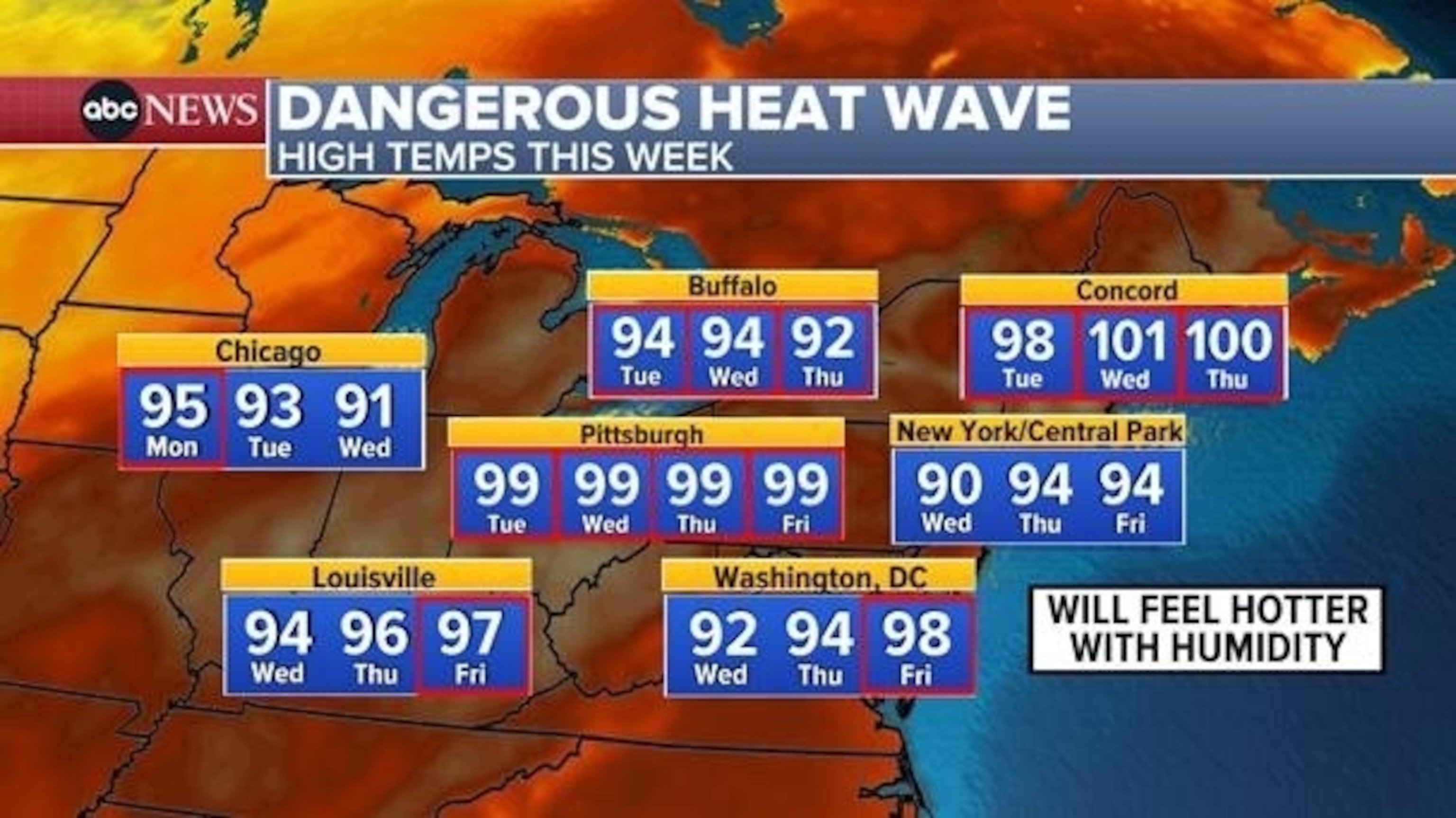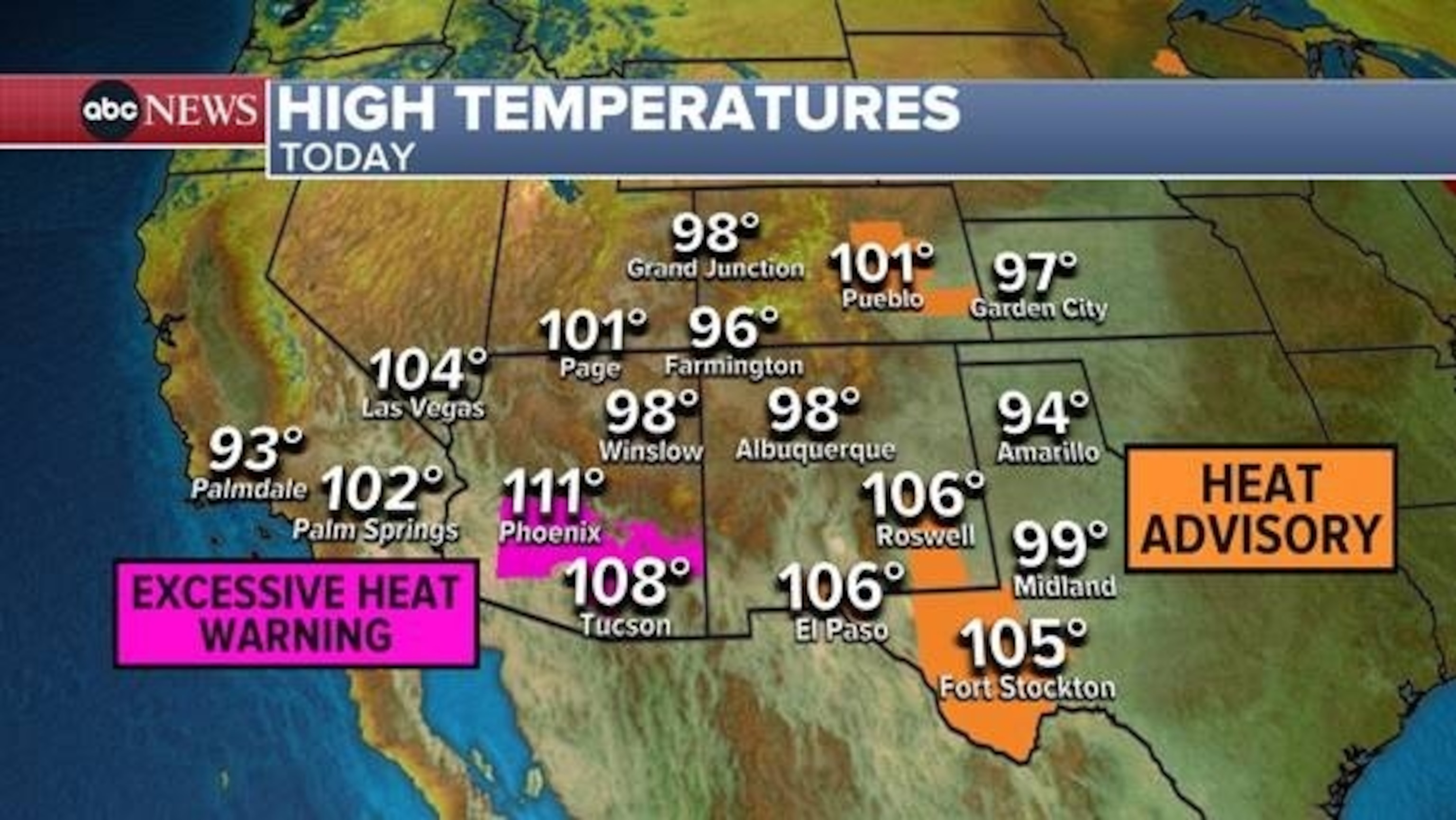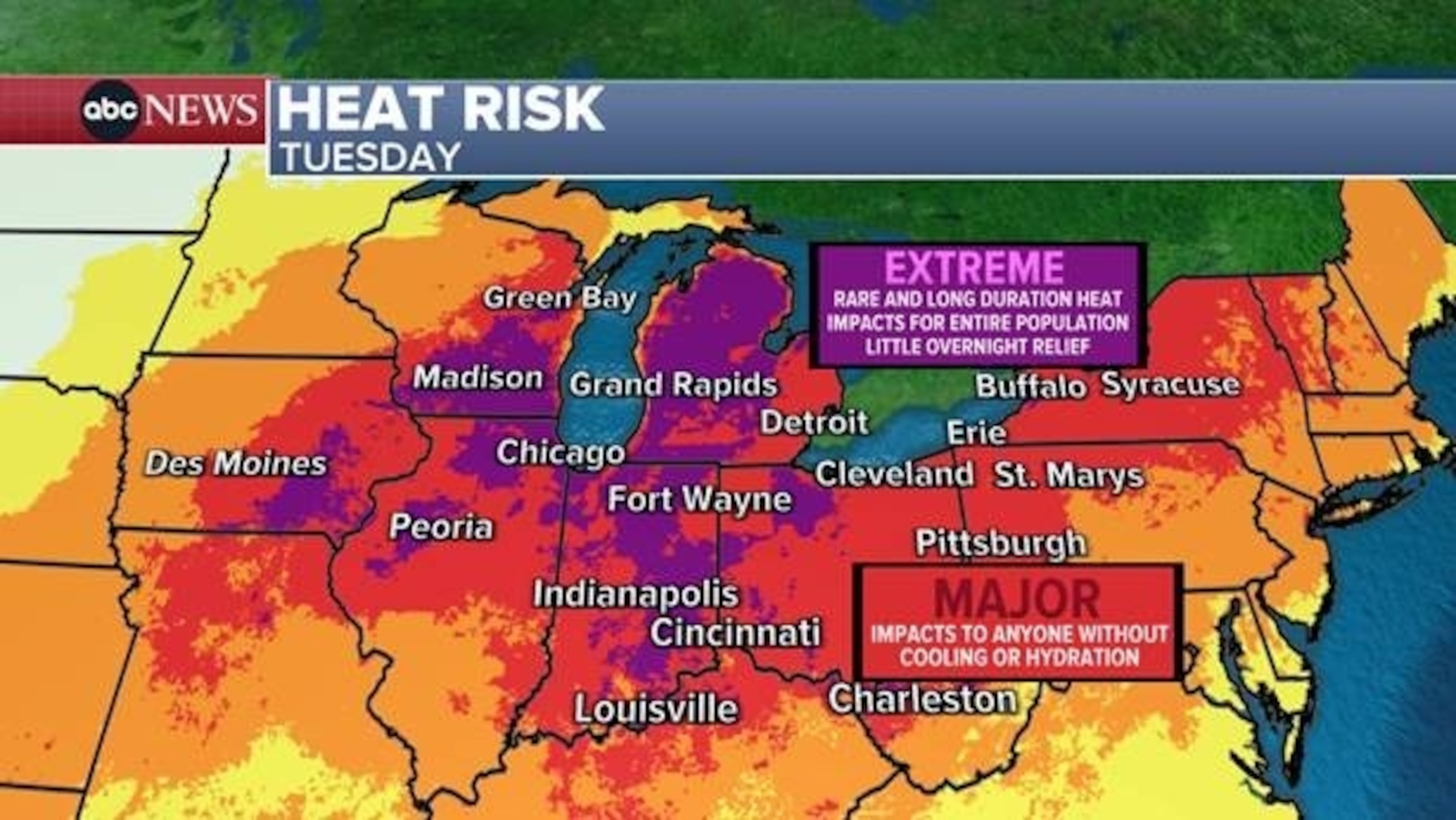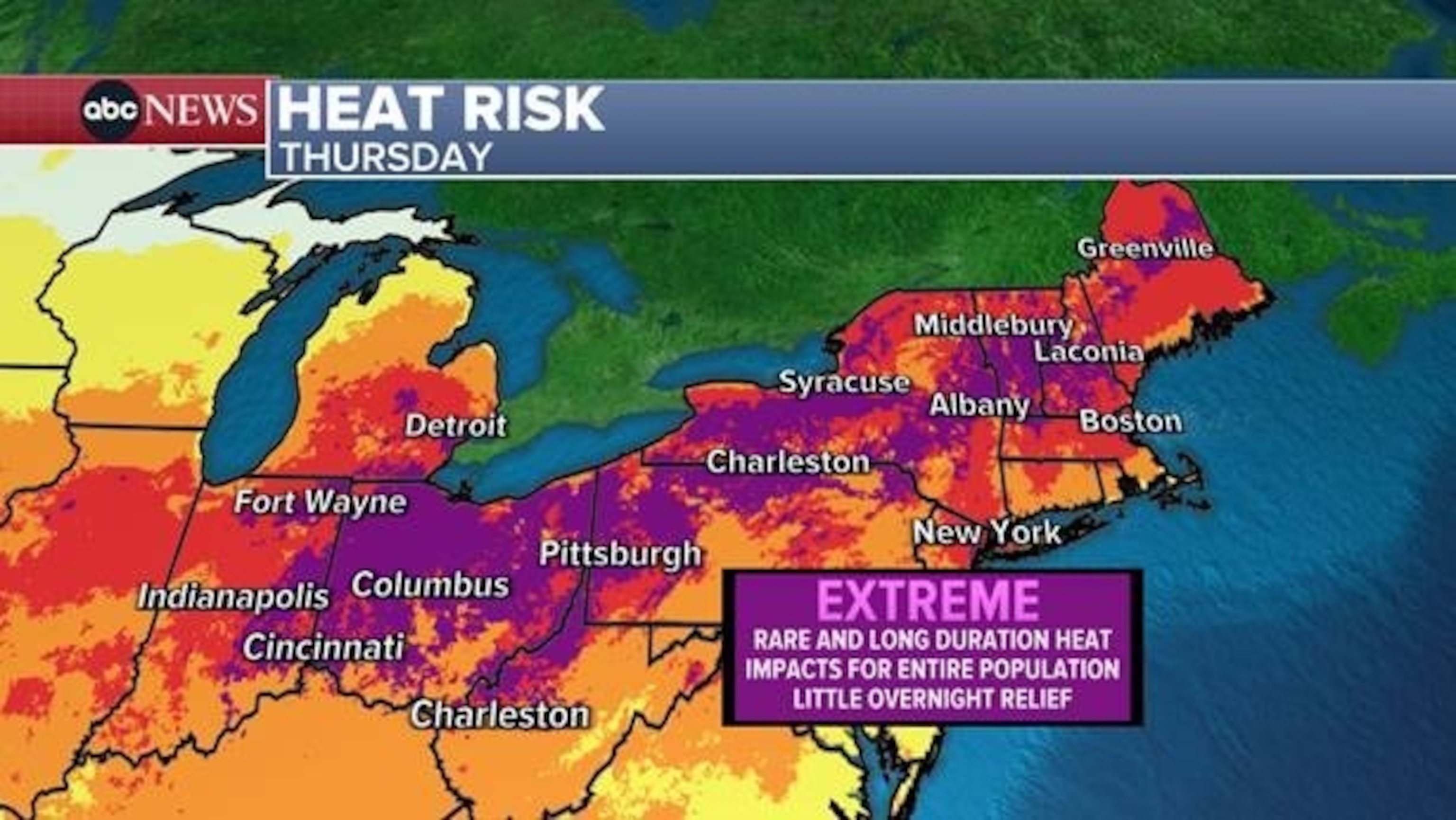More than 55 million people across the nation were under an alert for extreme heat on Sunday and through most of the week ahead as temperatures are forecast to hit triple digits in some parts of the country.
Over the next seven days, 265 million people, or about 82% of the U.S. population, are likely to experience temperatures topping 90 degrees as the official first day of summer arrives on Thursday.
An Excessive Heat Watch was already issued Sunday for parts of New England, including Connecticut, Massachusetts and New Hampshire. The temperature in Concord, New Hampshire, is forecast to reach 101 on Wednesday.

Spectators stand in the heat while waiting to watch players warm up prior to an international soccer friendly between Mexico and Brazil on June 8, 2024, at Texas A&M’s Kyle Field in College Station, Texas.
Julio Cortez/AP
New York City could feel its first heat wave of the year as temperatures are forecast to reach 90 degrees on Wednesday and 94 on Thursday on Friday.
Pittsburgh is also in for a string of hot weather with temperatures expected to soar to 99 degrees on Tuesday, Wednesday, Thursday and Friday.

Kids play in a splash pad at Riverview Park on June 05, 2024 in Mesa, Ariz.
Justin Sullivan/Getty Images
The heat-wave forecast for Pittsburgh could be the city’s hottest all-time for the month of June. The previous five-day June record occurred in 1994 with a temperature average of 96.4 degrees.
The all-time record for a heat wave in Pittsburgh happened in mid-July 1988 when city residents sweltered for five consecutive days with 98.6-degree temperatures.

Heat wave weather map.
ABC News
Washington, D.C., is also expected to be inundated with 90-degree weather and could flirt with the century mark by Friday.
High temperatures are also forecast for Ohio and southeast Michigan, where an excessive heat watch is also in effect from Monday through Friday.
Daily temperature records are expected to fall this week in Chicago, Green Bay and Cleveland.

High temperatures weather map.
ABC News
Out west, dangerous heat is expected for Texas, Arizona, Nevada and New Mexico.
An excessive heat warning was issued for Phoenix and Tucson, Arizona, where temperatures threatened to hit the 110-degree mark on Sunday.

Heat risk weather map for Tuesday, June 18.
ABC News
Roswell, New Mexico, is expected to reach 105 degrees on Sunday and El Paso and Fort Stockton, Texas, are expected to get just as warm.

Heat risk weather map for Thursday, June 20.
ABC News
Authorities warn people enduring such high temperatures to stay hydrated and out of the heat, and to check on elderly neighbors and relatives.
In 2023, there were 2,302 heart-related deaths across the country, a 34% increase from 2022.
As temperatures continue to soar across the country, many regions are facing dangerous heat wave conditions that pose serious risks to public health and safety. From the East Coast to the West Coast, millions of Americans are feeling the oppressive heat and humidity that can lead to heat-related illnesses and even death.
The National Weather Service has issued heat advisories and warnings for a large portion of the nation, urging people to take precautions to stay safe in the extreme heat. High temperatures combined with high humidity levels can make it difficult for the body to cool itself down, leading to heat exhaustion and heat stroke.
In cities like Phoenix, Arizona, where temperatures have been reaching well over 100 degrees Fahrenheit, residents are being advised to stay indoors during the hottest part of the day, drink plenty of water, and avoid strenuous outdoor activities. Homeless populations are particularly vulnerable during heat waves, as they may not have access to air conditioning or cool shelter.
In urban areas, the phenomenon known as the “heat island effect” can make temperatures even hotter due to the abundance of concrete and asphalt surfaces that absorb and retain heat. This can create dangerous conditions for those who live in densely populated cities without access to air conditioning or cooling centers.
Heat waves can also have a significant impact on infrastructure, causing power outages as air conditioners strain to keep up with the demand for cooling. Public transportation systems may also be affected, leading to delays and disruptions in service.
It is important for individuals to take precautions during heat waves to protect themselves and their loved ones. This includes staying hydrated, wearing light-colored and loose-fitting clothing, and seeking out air-conditioned spaces when possible. Checking on elderly neighbors and relatives is also important, as they are more susceptible to heat-related illnesses.
As climate change continues to impact weather patterns, heat waves are expected to become more frequent and intense in the coming years. It is crucial for communities to be prepared for these extreme weather events and to take proactive measures to mitigate their effects.
By staying informed and taking steps to stay safe during heat waves, we can help prevent heat-related illnesses and deaths and ensure the well-being of our communities during these challenging times.



